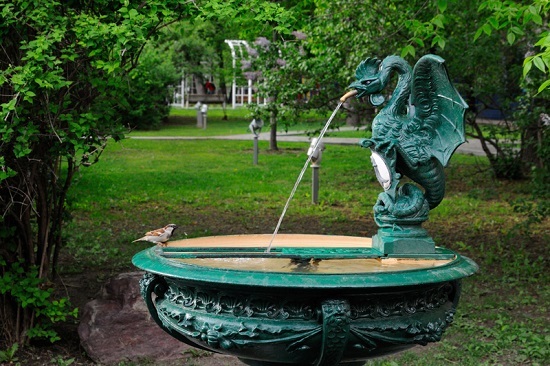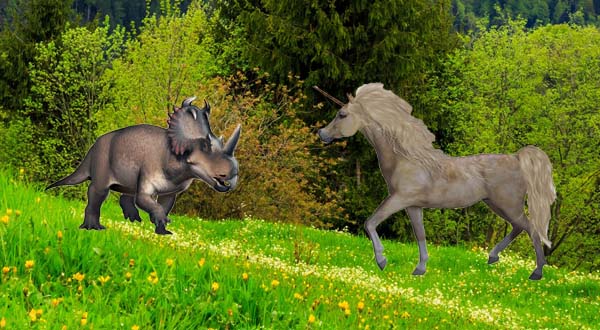The creature sculpted into the fountain above is the mythical cockatrice. It was not included in the below list from one atheist in his attempt to mock the Bible and the Christian faith for including what he considers unbelievable creatures:
“He follows a holy book with a jealous & genocidal god, ghosts, zombies, seers, devils, demons, witches, satyrs, unicorns, talking animals, a man who lived in a fish and a 7 headed dragon.”[1]
Like many atheists he’s grossly wrong in many of his presumptions. And since I’m sure someone with an anti-Bible axe to grind will point to the cockatrice as an unbelievable creature in the Bible I’ve included it. Though not mentioned in this atheist’s list, this is a good place to handle it – following an article on the satyr – because a lot of similar dynamics are involved. Of particular note is the use of Hebrew rhyme – the repetition of a single idea. In Is 34.14 we looked at the use of rhyme when a satyr – an idol for a pagan demonic god represented by a goat – was used in the context of judgment. In contrast here we see Hebrew rhyme used with the word the KJV translates as “cockatrice” in the context of the glorious reign of Christ on earth, in a passage about the effects of the curse being removed.
So what’s going on here? Is the Bible really referring to the mythical beast, a winged serpent with a rooster’s head and deadly gaze, hatched from a cock’s egg? Or is something else going on? With a little history and some good dictionaries, it’s easy to see both the intent of the word (a poisonous viper such as an asp or Egyptian cobra), and a likely reason why those more common words weren’t used. Continue Reading



